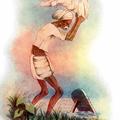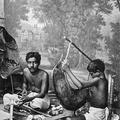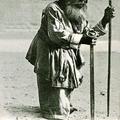The "Dhoby"
Hobson Jobson (1903) the great dictionary of Indian words in English, defines "Dhoby, Dobie s. A washerman; H. dhobi [from dhona, Skt. [Sanskrit] dhav, 'to wash.'] In colloquial Anglo-Indian use all over India. A common H. [Hindustani] proverb runs:



